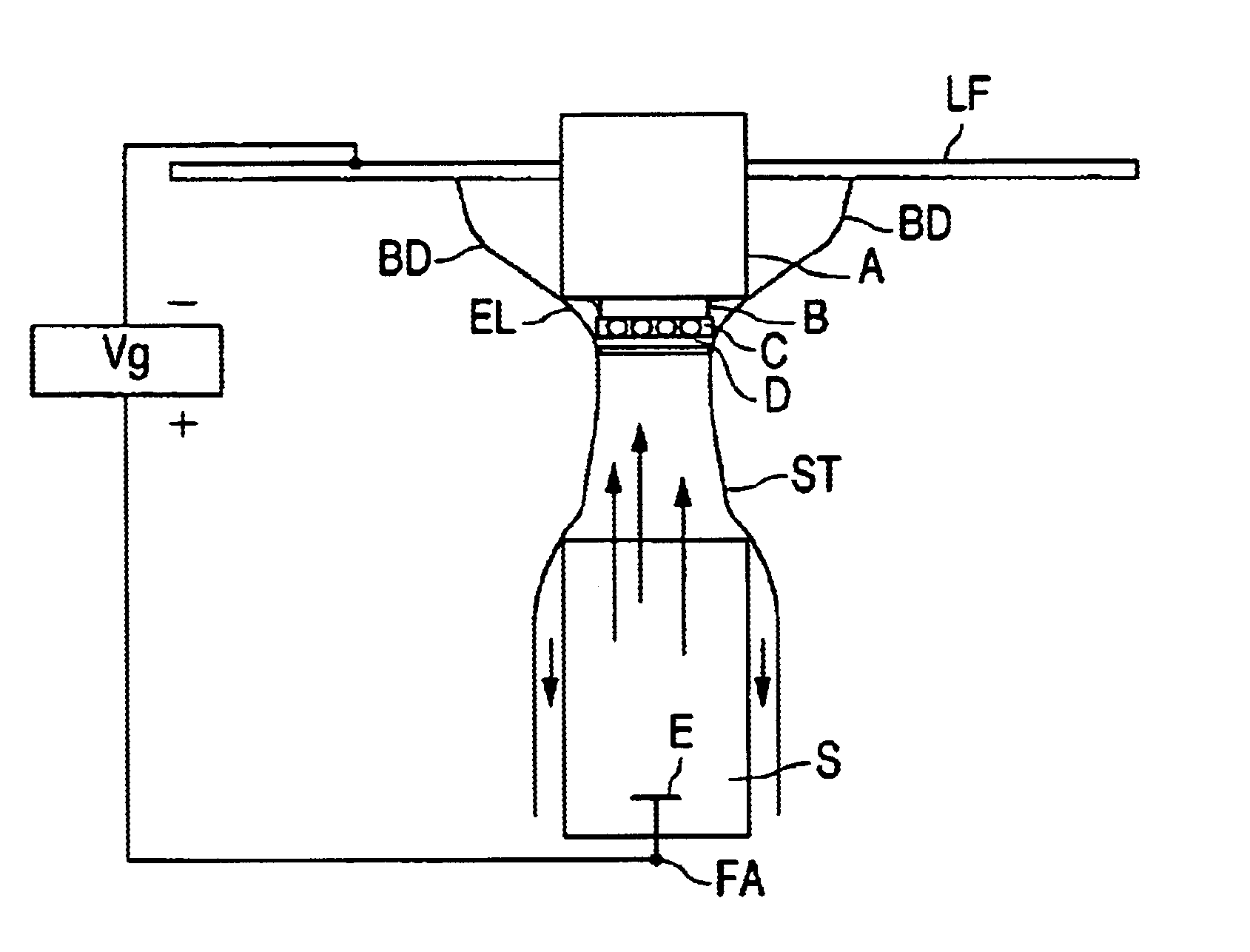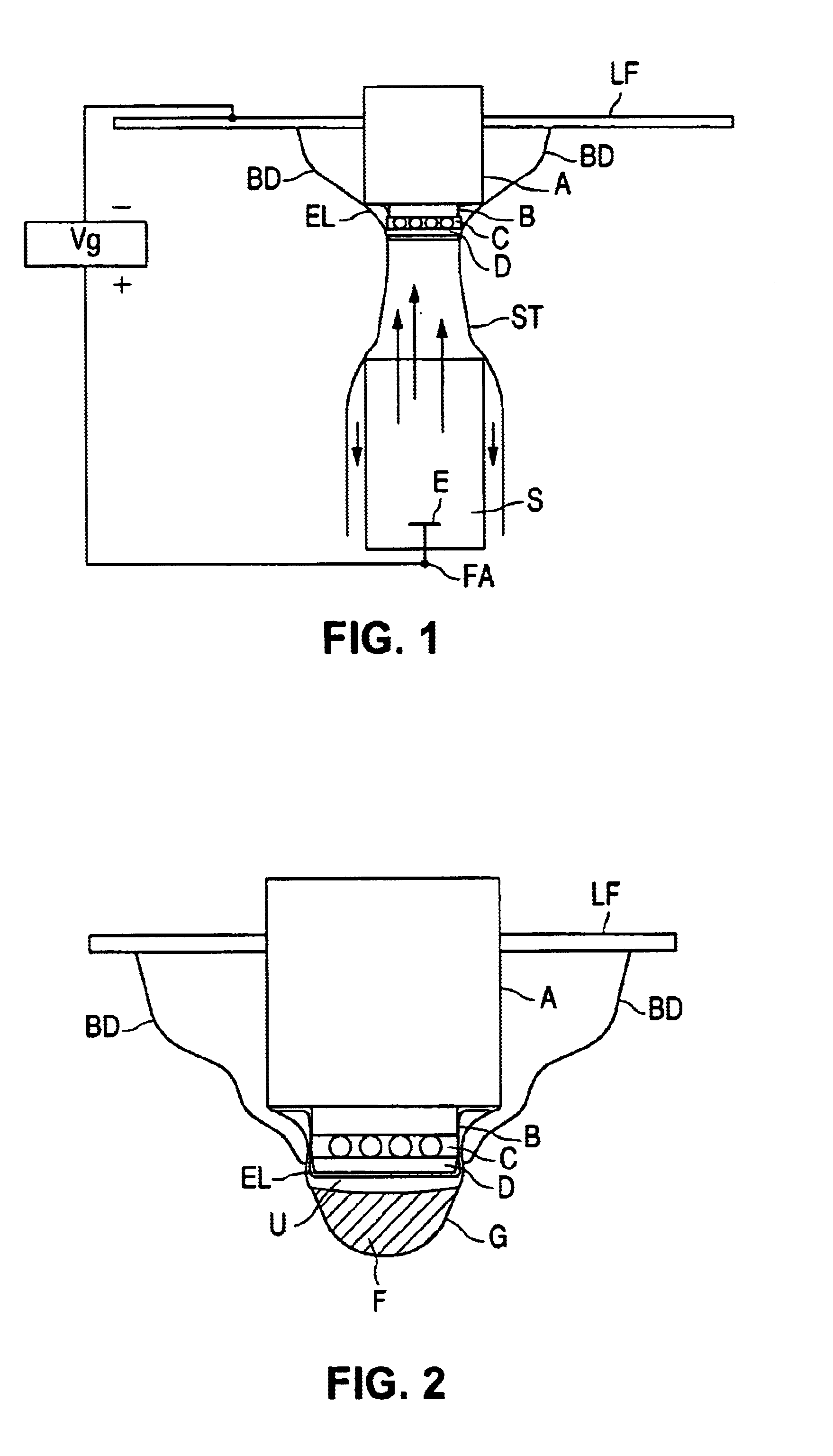Light emitting device including an electroconductive layer
an electroconductive layer and light-emitting device technology, applied in the field of optoelectric elements, can solve problems such as the difficulty of applying the luminescent layer onto the optoelectri
- Summary
- Abstract
- Description
- Claims
- Application Information
AI Technical Summary
Benefits of technology
Problems solved by technology
Method used
Image
Examples
Embodiment Construction
In FIG. 1, LF denotes a carrier plate of an electroconductive material. A denotes a heat sink, which is provided in a hole in the carrier plate LF and which is made from a metal. On the heat sink A there is provided a submount B composed of a Si wafer covered with a layer of aluminum. Ends of the submount B are connected to respective bonding wires, which are each connected to the carrier plate LF. D denotes a LED, which comprises a substrate made from an electrically insulating ceramic material on which a number of epitaxial layers consisting of a semiconductor material are provided. These epitaxial layers jointly form a semiconductor body. C denotes solder balls forming electric contacts between LED D and submount B. ST denotes a droplet of a suspension S of a luminescent material. The droplet ST is in contact with a part of the outside surface of heat sink A, submount B, contacts C and LED D. The part of the outside surface of heat sink A, submount B, contacts C and LED D contact...
PUM
| Property | Measurement | Unit |
|---|---|---|
| thickness | aaaaa | aaaaa |
| electric conductivity | aaaaa | aaaaa |
| electroconductive | aaaaa | aaaaa |
Abstract
Description
Claims
Application Information
 Login to View More
Login to View More - R&D
- Intellectual Property
- Life Sciences
- Materials
- Tech Scout
- Unparalleled Data Quality
- Higher Quality Content
- 60% Fewer Hallucinations
Browse by: Latest US Patents, China's latest patents, Technical Efficacy Thesaurus, Application Domain, Technology Topic, Popular Technical Reports.
© 2025 PatSnap. All rights reserved.Legal|Privacy policy|Modern Slavery Act Transparency Statement|Sitemap|About US| Contact US: help@patsnap.com


